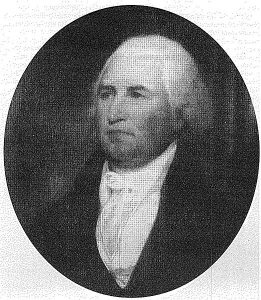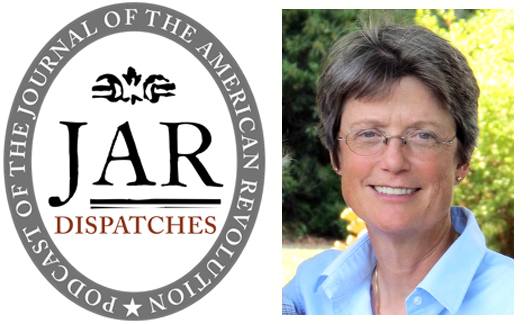
Edward Bancroft habitually worked late into the evenings on Tuesday. This evening he was finishing a letter to his new mistress and arranging a liaison. Finishing his letter, he rolled it up as was his custom and slid it into his coat pocket. Later that evening after a short carriage ride, he entered the Tuileries Garden in Paris which was almost deserted at that dark hour. Taking care in choosing a route that kept him in the shadows of the night, he made his way to a certain tree. Reaching down into the roots of the tree he picked up a peg to which a bit of twine was attached. The twine led into the dark recesses of a concealed hole in the trunk of the tree and was tied to the neck of a bottle which the man pulled from the tree. He reached into his pocket and pulled out the love letter to his mistress and pushed it into the bottle. He then lowered the bottle back into the hole, set the peg on the ground, stood up, and made his way to the exit of the south terrace of the garden and went home.
Between the lines of the relatively innocent love note were messages written in invisible ink sent by a spy to his superiors. Edward Bancroft was a very effective British spy. He worked closely with the American commissioners to France throughout the War of American Independence. Bancroft was in a position to know everything the commissioners did as he spoke French and often interpreted for them with the French Foreign Minister[1]. The notes he wrote to a fake mistress made a convenient cover for his messages to his British superiors. The hole in the tree in the Tuileries Garden was his original dropping point.
Bancroft was the perfect agent for the British. The first American to arrive in France on behalf of the Continental Congress had been Silas Deane. Deane’s mission had been to secure credit for the nearly destitute Americans, as well as arms, ammunition, and military supplies for the Continental Army who lacked everything but manpower.[2] Deane knew Bancroft as he had been Deane’s pupil during Deane’s tenure as a schoolteacher in Hartford, Connecticut.[3] He had been recommended to Silas Deane by none other than Benjamin Franklin, who had employed Bancroft as an information gatherer while Franklin was a colonial agent in London before the war. Deane, who could not speak or read French, was undoubtedly happy that he had a highly recommended contact in Paris whom he also knew.
Naturally, the British were actively seeking to interdict or prevent any type of arms shipments to the American colonies, and employed agents throughout the Atlantic world to keep them informed of such shipments. Deane’s arrival in France complicated things for the British and they strived to place an agent close to Deane. Bancroft fell into their lap almost like a miracle. After meeting with Deane in July and translating for him in a meeting with the French foreign minister, Bancroft returned to his home in London. Before leaving he agreed to work for Deane in gathering information on British developments. While in London Bancroft met with important British officials, and agreed to work for the British as a double agent.[4] As he was a double agent the British didn’t trust him entirely and often ignored his reports.
When Franklin arrived in December 1776 he carried commissions from the Continental Congress naming Deane and Arthur Lee commissioners under his leadership.[5] Bancroft was quickly employed by them and became a trusted member of the commission. Thus began a very high stakes game of international espionage in which the rules were thrown out the window. Even the French played in this game as they had their own spies in the American commission as well keeping their visitors under constant surveillance.[6] This made Bancroft’s and some of the other British spies’ ability to consistently copy and deliver information to the British embassy in Paris even more remarkable.
Franklin’s seemingly casual attention to security didn’t help any matters. If anything, it reinforced Deane and Lee’s paranoia that they were being spied upon. Deane had come to accept the possibility of spying and was more concerned with assassination attempts which had been the subject of many rumors (and actual ideas not followed up on) since his arrival. Lee on the other hand became completely paranoid and may have lost his mental stability over the spying issue as he accused everyone but himself of spying for the British. It was just assumed that the French servants were spying for the French which they almost certainly were. Lee’s paranoia, petty jealousy of Deane and Franklin, disgust of everything French, and general failure at diplomatic efforts had rendered him persona non grata with Deane and Franklin by the end of 1777.[7] They ignored his claims about British spies and thought he was going mad.
They should have listened to Lee this one time because he had correctly identified Edward Bancroft as a spy. However, the revelation that the companion of Deane’s secretary was a British spy caused them to think the matter was closed.[8] Bancroft escaped detection and would later steal Deane’s private letters to his brother in 1781 in which Deane, who had nearly lost everything in the cause of the Revolution including his wife who died in 1777, had stated that America had no chance of winning and should make peace with Britain. The stolen letters were sent to London and then on to New York where they were printed in October of 1781, just as the combined French and American armies captured Cornwallis and a British Army at Yorktown.[9] Deane was ruined and considered a traitor in a victorious America. He lived as a pauper in Europe before he attempted to return home to clear his name in 1789. He died on the voyage under mysterious circumstances.
Edward Bancroft, a traitor and double agent for the Americans and British, was perceived as a loyal American who served his country well in France during the Revolution. Following the war he returned to live in London, and eventually was elected a Foreign Honorary Member of the American Academy of Arts and Sciences in 1797. In addition, he was involved in working with types of dyes from his research in British Guiana when he was there in 1763. Bancroft also experimented with poisons in 1763 such as curare or woorara as he called it.[10] This fact, coupled with the knowledge that Bancroft was attending Deane during the winter of 1789 as Deane was deathly ill has led some to speculate that Bancroft poisoned Deane by slipping some of the curare into Deane’s medicines. It is a known fact that Bancroft had brought samples of curare to London in the 1760s because he had stated so in 1769.[11]
Did Edward Bancroft murder Silas Deane with poison? There are many questions surrounding this possibility. Why did he wait until September to do it when he could have poisoned Deane at any point in 1789, especially while Deane was deathly ill? Did he think that Deane had identified him as a spy and was going to use that information to redeem himself in America? Interestingly, after Deane had died rumors in London indicated the he had committed suicide. Bancroft was directly tied to those rumors as one letter to Thomas Jefferson stated that “Deane’s suicide was the suspicion of Dr. Bancroft.”[12] The only way of proving the poisoning theory would be to exhume and examine Deane’s body which was buried in the village of Deal, near Dover in Great Britain. Perhaps, some evidence of poison may be still be discoverable.
Bancroft was never revealed as a spy during his lifetime. The revelation only came about in 1888 when a reporter was searching the private papers of the British lord who Bancroft reported to.[13] The American mission to France under Benjamin Franklin and Silas Deane did manage to achieve its goal of creating an alliance with France against Great Britain. Despite the fact that their mission was thoroughly penetrated by Bancroft, Franklin and Deane managed to use the French antipathy towards the British along with a strong thirst for revenge to gain allies, arms, and money for their cause. That resulted in victory for the fledgling United States as well as making Dr. Edward Bancroft, easily the best secret agent the British had ever had until the 20th century, the most effective ineffective spy for His Majesty’s Secret Service.














4 Comments
Most excellent article. Here is a quick anecdote that provides a bit more insight into Mr. Lee, direct from Silas Deane himself:
Arthur Lee met with a Frenchmen named Holker who Deane and Franklin had contracted to purchase 15,000 suits for the army. Mr. Holker had some ideas on how to improve the design and make the coats more protective in cold weather and wanted to present them to the American Commission. However, Lee had been traveling in Spain when the contract was originally made and had been quite vocal in his unhappiness with Deane for having done so in his absence. Unfortunately, Lee was about to show that special part of his anatomy so often presented to the French, his ass. From Deane:
“everything was by Mr. lee found fault with. Mr. Holker very patiently heard him, and pertinently answered his several questions: that as to the improvement on the lapels, it was so great, and the expense so very trifling, that sooner than give it up, he would even be content to throw the extra expense out of his account. To which Mr. Lee replied, that if he did, he had still an objection that could not be got over, it was the additional weight of the four buttons and one-sixth of cloth, which must help to fatigue the soldier in his marching. Mr. Holker and the other gentlemen at this lost all patience, and refused ever after to have anything to do with him, as did almost every other person with whom we had formed any connections.”
This is the best article I have read on Edward Bancroft. A great opening scene with a wonderful twist to his trade craft.
Fascinating piece Jimmy!
I really enjoyed reading this article. I have just finished and am reading for the second time the book, “Yankees At The
Court: The First Americans in Paris” by Susan Mary Alsop. This is where I first became acquainted with Dr. Edward Bancroft. What is really amazing is that although he had the ideal placement and opportunity to sabotage our mission in Paris he was unable to alter our special destiny. I look forward to reading more of your posts.